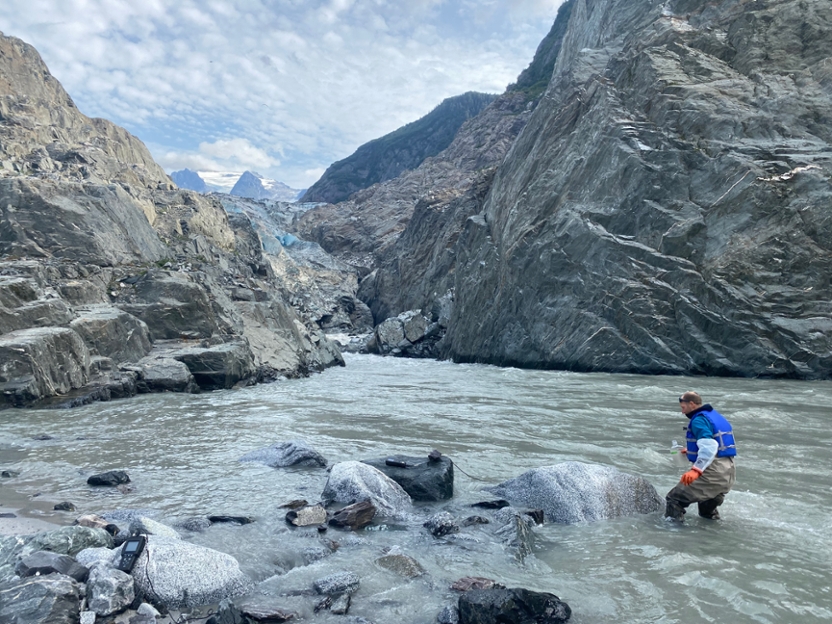High spatial variability in the export of terrestrial carbon to coastal ecosystems, new research finds

A new study, led by ACRC research scientist John Harley, paints a clearer picture of how dissolved inorganic carbon (such as carbon dioxide) moves from land to sea in Southeast Alaska. By modeling carbon transport in rivers across more than 2,000 watersheds, the team estimated the amount of dissolved inorganic carbon (DIC) moving into coastal waters. They found that streamflow type (glacial-fed, snowmelt, or rainfall) and the presence of karst (landscape formations created by carbonate rocks such as limestone) were major factors influencing the type and amount of carbon transported.
Acre for acre, Southeast Alaska is one of the largest sources of DIC in the state. Heavy precipitation, rapid glacial retreat, and dense temperate rainforest in the region push carbon from the terrestrial ecosystem into the Gulf of Alaska, impacting the acidity of coastal waters. As climate change brings higher temperatures and more frequent severe precipitation events, improving our knowledge of the flow of carbon becomes increasingly important. This detailed analysis of carbon movement will help to identify zones of concern or community vulnerability to ocean acidification or other coastal processes.
Using DIC measurements from 1957 to 2020 and daily flow measurements from streams across 24 watersheds, the researchers created a model that predicts monthly carbon export across a larger 200,000-square kilometer area based on two factors; the presence of karst, and the type of streamflow. They found that the average amount of DIC moving to coastal ecosystems from these Southeast Alaska watersheds each year was 2.36 teragrams of carbon with an average yield of 12.52 grams of carbon per square meter per year. For most of the year, concentrations of DIC were significantly higher in watersheds with karst terrain compared to watersheds with none.
This research provides insight into seasonal carbon dynamics and improves our understanding of carbon budgets in the Pacific temperate rainforest and the surrounding marine environment. For many communities in the Panhandle, marine species such as shellfish and salmon are critical economic, cultural, and recreational resources. Detailed information on carbon and acidification patterns will be essential for adaptation planning and food security.
ACRC researchers Jason Fellman and Eran Hood were co-authors on the paper published in the journal Biogeosciences, alongside former ACRC postdoc and current NOAA Alaska Fisheries Science Center researcher Mariela Brooks, and US Forest Service scientists Frances Biles and David D’Amore.